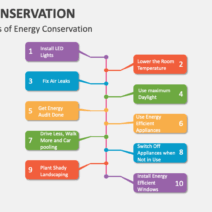The implications of global warming have become increasingly pronounced, most notably influencing agricultural productivity across the globe. As the globe warms, the dynamics of the growing season—the period during which crops are cultivated—are evolving, leading to a myriad of challenges. But have you ever wondered how the very staples we rely on might be shaped by rising temperatures? This inquiry opens a Pandora’s box of issues surrounding food security, ecological balance, and economic stability, making it imperative to understand the ramifications of climate change on cultivated cereal crops.
First and foremost, the relationship between temperature and crop yields is intricate. Most crops thrive within a specific temperature range. When temperatures escalate beyond these confines, plants can experience heat stress. For instance, wheat and maize, two cereal powerhouses, are particularly susceptible to temperature fluctuations. Research suggests that even a modest increase of 1°C could lead to a reduction in yields by as much as 10%. This raises a critical challenge: how can we adapt agricultural practices to mitigate these adverse impacts while ensuring food security?
As we traverse deeper into the implications of rising temperatures, it’s essential to address the alteration in precipitation patterns. Climate change engenders a paradigm shift in both the frequency and intensity of rainfall. Some regions may experience droughts, while others may face torrential downpours. Such erratic weather patterns challenge traditional farming practices. For instance, droughts can lead to desiccation of soils, rendering them arid and inhospitable for crop cultivation. Conversely, excessive rainfall can exacerbate flooding, resulting in waterlogged fields that inhibit seed germination and root development.
Moreover, global warming triggers the proliferation of pests and diseases that threaten crop health. Warmer temperatures can create a hospitable environment for pests like aphids and beetles, which can devastate cereal crops. Meanwhile, pathogens that flourish in elevated temperatures may lead to increased instances of blight and fungal outbreaks. Farmers need to employ integrated pest management strategies, combining biological controls, genetic resistance, and judicious application of pesticides. The question remains: how can agricultural technology evolve to offset these burgeoning threats?
Another formidable consequence of global warming is the phenomenon known as “climate variability,” which refers to significant and unpredictable fluctuations in weather patterns. This unpredictability can thwart farmers’ planning strategies. For example, if a region historically experienced consistent seasonal rains, an abrupt shift to prolonged dry spells could culminate in catastrophic crop failures. Farmers rely on historical weather patterns to prognosticate planting schedules and harvest times. As these patterns become increasingly erratic, the precision of agricultural forecasting diminishes, leading to potential food shortages and economic hardship.
Furthermore, the rising levels of carbon dioxide (CO2) in the atmosphere, while initially seeming beneficial for photosynthesis, bring an insidious complexity to the equation. Elevated CO2 levels can lead to enhanced growth in some crops; however, this growth is not without consequences. The resultant increase in biomass often comes with diminished nutritional value, particularly in essential nutrients such as iron and zinc. The irony is palpable: while crops may grow taller, they may also be less beneficial for human consumption, introducing a paradox in the pursuit of food security.
As we consider these myriad challenges, it becomes clear that adaptation is essential. One avenue of adaptation lies in the development and implementation of climate-resilient crop varieties. Breeding programs are increasingly focusing on cultivating crops that can endure higher temperatures, resist pests, and tolerate drought conditions. These innovations are not merely advantageous but necessary to ensure sustainable agricultural practices in a warming world.
Meanwhile, agroecological practices are gaining momentum as a robust response to the vicissitudes of climate change. Techniques such as crop rotation, intercropping, and organic soil amendments not only enhance soil health but also bolster crop resilience. By fostering biodiversity on farms, these strategies can effectively disrupt pest cycles and promote an ecological balance, reducing reliance on chemical inputs.
Technology also plays a crucial role in adapting agricultural practices to climate change. Precision agriculture, employing data analytics and IoT devices, enables farmers to monitor soil conditions, optimize irrigation, and deploy fertilizers judiciously. Such innovations help mitigate the impacts of both drought and excessive rainfall, aligning agricultural productivity with environmental stewardship.
However, the onus does not solely rest on farmers. Policymakers, research institutions, and consumers each have pivotal roles to play in confronting these challenges. Governments can incentivize sustainable farming practices, invest in agricultural research, and promote education initiatives that empower farmers to adapt to climate change. Furthermore, consumers can advocate for and support local, sustainable agriculture, thereby transitioning their purchasing choices to those that prioritize environmental health.
In conclusion, the plight of our crops in the face of global warming is multifaceted and complex. The changes to the growing season caused by rising temperatures and unpredictable weather patterns present a formidable challenge. Yet, within this challenge lies an opportunity for innovation and collaboration. As we endeavor to safeguard our food systems, it is imperative that all stakeholders engage in a concerted effort to develop resilient agricultural practices, invest in research, and foster sustainable policies. The future of our crops—and, consequently, our survival—depends on our ability to adapt and innovate collectively.






